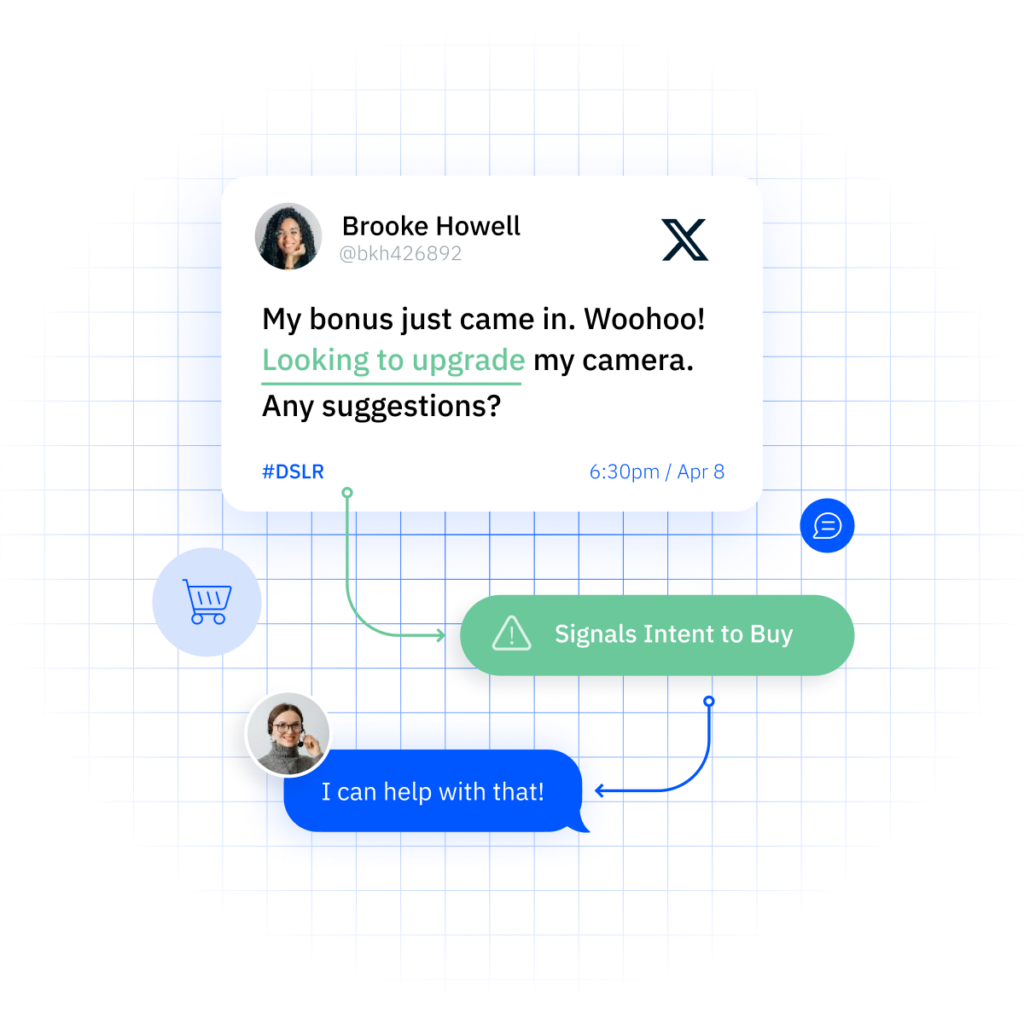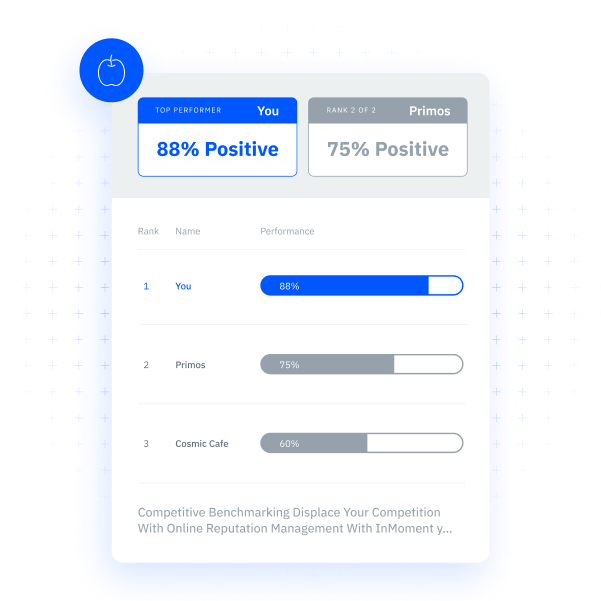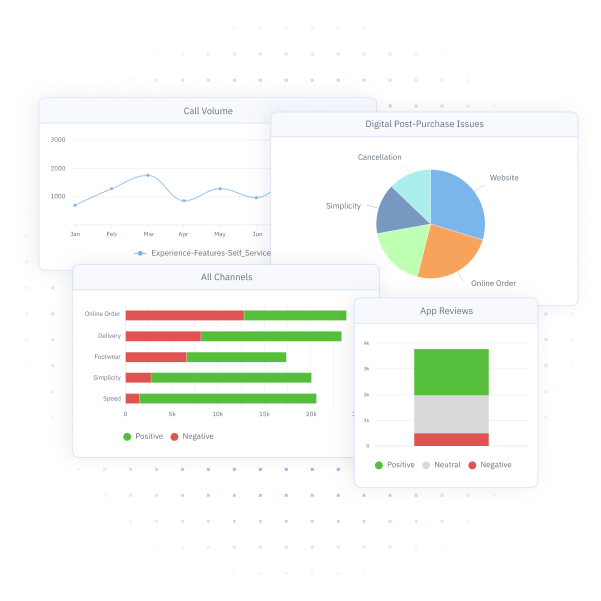Why You Should Build an Omnichannel Customer Experience
An omnichannel customer experience allows customers to interact with an organization across multiple channels throughout their customer journey. Customers can effortlessly switch between channels without disruption by providing a consistent experience across online platforms, in-store, mobile apps, and more, ensuring a cohesive and personalized experience that meets their needs at every touchpoint.
Did you know that marketing campaigns that used three or more channels saw an order rate that was 494% higher than a single-channel campaign? The majority of consumers want to engage with you on multiple channels, and reaching them on multiple channels will make your business more successful.
However, 77% of organizations admit they struggle to create a consistent customer journey across multiple channels. This is concerning since three out of four consumers don’t want to have to repeat themselves when communicating with representatives.
In order to capitalize on the modern customer’s expectations, you need to build an omnichannel customer experience that can start, continue, and end on any channel that the customer prefers.
What is Omnichannel Customer Experience?
Omnichannel customer experience refers to providing a seamless customer experience for customers across multiple channels or touchpoints. This approach ensures that customers can interact with a business or brand consistently regardless of whether they are using a website, a mobile app, social media, a physical store, or any other channel.
Omnichannel vs Multichannel
While both omnichannel and multichannel strategies involve leveraging multiple channels, they differ significantly in their approach and execution. Omnichannel strategies prioritize seamless integration and consistency across all customer touchpoints. They aim to provide a unified experience where customers can transition between channels effortlessly, without experiencing any disconnect. Whether a customer interacts via a website, mobile app, social media, or in-person, the experience remains consistent and interconnected.
Multichannel strategies, on the other hand, may involve using multiple channels independently. While they offer customers various avenues to engage with the brand, there may be less emphasis on integration and consistency between these channels. Customers might have different experiences or encounter discrepancies when switching between channels.
What are the Advantages of Omnichannel Customer Experience?
Omnichannel experiences make it easier for customers to engage with a brand by providing multiple channels through which they can interact. Whether they prefer to shop online, visit a physical store, or contact customer service via social media, customers have the flexibility to choose the most convenient option for them. Aside from convenience, there are many other advantages of implementing an omnichannel customer experience strategy.
Consistency
Omnichannel strategies ensure a consistent experience across all channels, which builds trust and customer loyalty. Whether they interact with the brand online, in-store, or through a mobile app, customers receive the same level of service and messaging.
Personalization
By integrating data from various channels, businesses can create more personalized experiences for customers. This is extremely beneficial since 71% of consumers want personalized experiences. Organizations can tailor product recommendations, promotions, and communications based on individual preferences and behaviors, leading to higher engagement and conversion rates.
Seamless Transitions
Omnichannel strategies enable seamless transitions between channels, allowing customers to start an interaction on one channel and continue it on another without any disruptions. For example, a customer may research a product online and then visit a physical store to make a purchase, with their shopping cart and preferences already synced.
Insights and Analytics
Omnichannel strategies generate valuable data and insights about customer behavior and preferences across different channels. By analyzing this data, businesses can gain a deeper understanding of their customers and make informed decisions to improve their marketing, sales, and customer service efforts.
Increased Customer Satisfaction
By providing a cohesive and personalized experience across all channels, businesses can enhance customer satisfaction. When customers feel valued and understood, they are more likely to return for future purchases and recommend the brand to others.
How Omnichannel Customer Experience Impacts Your Bottom Line
An omnichannel customer experience can improve every part of your organization and have a huge impact on your bottom line. With Pearl-Plaza’s XI platform, you can connect data from every source as well as utilize purpose-built tools to ensure that the data collected is the most actionable.
All of these tools can drive revenue growth, improve profitability, and position a business for long-term success by delivering value to customers at every stage of their journey. Let’s dive deeper into the ways an omnichannel customer experience can impact your bottom line:

Increased Sales
Omnichannel strategies can lead to higher sales by providing customers with more opportunities to engage with the brand and make purchases. By offering seamless integration between online and offline channels, businesses can capture sales from customers who prefer to shop across multiple channels, resulting in increased revenue.
Improved Customer Retention
Omnichannel experiences enhance customer satisfaction and loyalty by providing consistent and personalized interactions across all channels. Satisfied customers are more likely to return for future purchases and become advocates for the brand, leading to higher customer retention rates and reduced churn.
Cost Savings
Omnichannel strategies can lead to cost savings by optimizing operational efficiencies and reducing redundant processes. For example, integrating inventory management systems across online and offline channels can minimize inventory holding costs and prevent stockouts or overstock situations. Additionally, providing self-service options through digital channels can reduce the need for expensive customer support resources.
Enhanced Brand Reputation
Positive omnichannel experiences can play a vital role in your brand reputation management, and help you increase customer trust. When customers receive consistent and personalized interactions across all channels, they are more likely to perceive the brand positively and recommend it to others, driving word-of-mouth referrals and organic growth.
With Pearl-Plaza’s XI Platform, you can listen, analyze, and act on reviews and alerts from your selected websites at a fraction of the cost of other solutions.

Competitive Advantage
Offering a seamless and personalized omnichannel experience can differentiate your business from your competitors. Customers are more likely to choose a brand that provides a convenient and consistent experience across all touchpoints, leading to increased market share and sustainable growth.
With Pearl-Plaza’s XI platform, you can compare your organization against competitors and benchmark performance against them. This can help you determine what you need to improve or invest more to be a leader in the market.

Realized ROI
It is usually difficult for organizations to calculate their customer experience ROI. However, by combining the channels across your customer experience, and with it the data in each channel, you can eliminate the silos in your business and begin to see how your customer experience efforts are impacting your business success. To see how much ROI Pearl-Plaza can deliver for you, fill out the ROI calculator below!
Omnichannel Customer Experience Examples
When companies effectively implement and manage omnichannel experiences with a customer experience platform, they break down the silos between online and offline touch points. In doing so, they can create a cohesive journey that enhances customer satisfaction and drives engagement and loyalty. Here are some examples of what an omnichannel customer experience can look like in action.
Buy Online, Pickup in Store
A customer browses products on a retailer’s website, adds items to their online shopping cart, and selects the option for in-store pickup. When they arrive at the store, they receive a notification on their mobile app, directing them to the designated pickup area. The customer can seamlessly transition from the online shopping experience to the physical store, with their order ready for pickup upon arrival. This is a great example of how omnichannel solutions can improve the retail customer experience.
Mobile App Integrations
A grocery chain offers a mobile app that allows customers to create shopping lists, view digital coupons, and locate products in-store via a digital map. Customers can scan items using their smartphone as they shop, adding them to their digital cart for a faster checkout experience. The app also provides personalized recommendations and offers based on the customer’s shopping history, enhancing the overall shopping experience.
Customer Profiles
An insurance company integrates its communication channels into a customer’s profile. So, if a customer calls customer service to file a claim, the customer service agent can put the details of the specific call into the customer’s profile. That way, when the customer enters a branch to follow up on the claim, the branch agent can pull up the customer’s profile and be completely up to speed with the customer’s experience up to that point.
With Pearl-Plaza, you can build unique customer profiles using customizable natural language processing (NLP) to understand individual customer insights and predict their next step in the customer journey.
How to Build an Omnichannel Customer Experience
Implementing a strategy that creates an omnichannel customer experience can seem like a complex process. But, it may not be as hard as you think. Building an omnichannel experience requires creating a customer-focused culture, and software to support it. Here are the steps to get you started building an integrated customer experience.
1. Understand Your Customers
Start by gaining a deep understanding of your customers’ preferences, behaviors, and expectations across different channels. Conduct market research, analyze customer data, and gather feedback to identify their preferred channels of interaction, pain points, and opportunities for improvement.
2. Integrate Channels
Choose the best customer experience management software that enables seamless integration and communication between online and offline channels. This may involve integrating data from various systems, such as CRM, e-commerce platforms, POS systems, and customer service software, to create a unified view of the customer journey. One of the most important parts of the omnichannel customer experience is having all your data in one place.
With Pearl-Plaza, you can utilize CX integrations to get insights from the systems your organization is already using. Once imported, you can create customizable dashboards to show you the most important data to your business.

3. Personalize Interactions
Leverage data and technology to deliver personalized experiences to your customers. Use customer data to segment your audience and tailor your marketing messages, product recommendations, and promotions to individual preferences and behaviors. Personalization can help deepen customer engagement and drive conversions.
4. Offer Seamless Transitions
Enable customers to transition seamlessly between channels without losing context or experiencing disruptions. For example, allow customers to start an interaction on one channel (e.g., browsing products online) and continue it on another (e.g., completing the purchase in-store) without having to repeat information or restart the process.
5. Measure and Optimize
Continuously monitor key customer experience metrics, such as customer satisfaction, conversion rates, and revenue per channel, to assess the effectiveness of your omnichannel strategy. Use data analytics and A/B testing to identify areas for improvement and optimize the customer experience across all channels.
Build an Omnichannel Customer Experience with Pearl-Plaza
Ready to take your customer experience to the next level? Utilize Pearl-Plaza’s customer experience platform to build a seamless omnichannel experience that delights your customers across all touchpoints. With our advanced technology solutions and expert guidance, you can integrate channels, personalize interactions, and optimize the customer journey to drive satisfaction and loyalty. Schedule a demo today!
References
Omnisend. What we can learn from omnichannel statistics for 2022. (https://www.omnisend.com/blog/omnichannel-statistics/). Accessed 10/4/2024.
Khoros. Must-know customer service statistics of 2024. (https://khoros.com/blog/must-know-customer-service-statistics). Accessed 10/4/2024.
McKinsey & Company. The value of getting personalization right—or wrong—is multiplying. (https://www.mckinsey.com/capabilities/growth-marketing-and-sales/our-insights/the-value-of-getting-personalization-right-or-wrong-is-multiplying). Accessed 10/4/2024.






